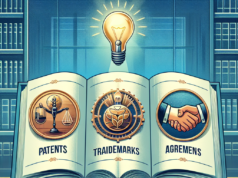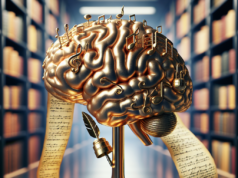
In an era defined by rapid technological advancements and the proliferation of digital content, the conversation surrounding copyright protection has reached a critical juncture. As artists, musicians, writers, and other content creators navigate an increasingly complex landscape, the need for reform in copyright laws has never been more urgent. This article delves into the current state of copyright protection, the challenges faced by creators, and the potential pathways for reform that could foster innovation while safeguarding intellectual property rights.
Understanding the Current State of Copyright Protection in the Digital Age
Copyright protection, originally designed to safeguard the rights of creators, has struggled to keep pace with the digital revolution. The rise of the internet and digital media has transformed how content is created, distributed, and consumed, leading to a significant increase in copyright infringement. Current laws, often rooted in frameworks established decades ago, fail to address the nuances of digital distribution, such as streaming services, social media platforms, and user-generated content. As a result, many creators find themselves in a precarious position, where their work is easily accessible yet inadequately protected, leading to calls for comprehensive reform.
The Impact of Outdated Copyright Laws on Creative Industries and Innovation
Outdated copyright laws have far-reaching implications for creative industries, stifling innovation and economic growth. The rigid nature of existing frameworks often limits the ability of creators to monetize their work effectively, leading to a decline in revenue for artists and a reduction in the diversity of content available to consumers. Furthermore, the fear of infringement lawsuits can deter new creators from entering the market, ultimately hindering the creative ecosystem. As industries such as music, film, and publishing grapple with these challenges, the need for a more flexible and adaptive copyright system becomes increasingly evident.
Key Challenges Faced by Artists and Content Creators Under Existing Copyright Frameworks
Artists and content creators face numerous challenges under the current copyright frameworks, including the complexities of licensing, the burden of enforcement, and the lack of clarity regarding fair use. Many creators struggle to navigate the labyrinth of copyright laws, often resulting in unintentional infringement. Additionally, the high costs associated with legal battles can be prohibitive, particularly for independent artists and small businesses. The existing frameworks also fail to adequately address the realities of collaborative and derivative works, leaving many creators vulnerable and uncertain about their rights. These challenges underscore the urgent need for reform that prioritizes the interests of creators while fostering a more equitable environment for artistic expression.
Exploring Global Perspectives: Successful Copyright Reforms and Their Outcomes
Looking beyond national borders, several countries have successfully implemented copyright reforms that balance protection with accessibility. For instance, the European Union’s Copyright Directive, adopted in 2019, aims to modernize copyright laws by addressing issues related to online content sharing and ensuring fair compensation for creators. Similarly, New Zealand’s recent reforms have focused on simplifying licensing processes and enhancing the rights of indigenous creators. These examples illustrate that thoughtful reform can lead to positive outcomes for both creators and consumers, fostering a more vibrant and sustainable creative landscape. By examining these global perspectives, policymakers can glean valuable insights into effective strategies for reform.
Proposed Reforms: Balancing Protection and Accessibility in Copyright Law
Proposed reforms to copyright law must strike a delicate balance between protecting the rights of creators and ensuring accessibility for consumers. One potential avenue for reform is the introduction of a tiered copyright system that offers varying levels of protection based on the type of work and its intended use. This approach could facilitate easier access to educational and non-commercial content while still safeguarding the rights of creators in commercial contexts. Additionally, enhancing the clarity of fair use provisions and streamlining licensing processes could empower creators to share their work more freely without fear of infringement. By prioritizing both protection and accessibility, reforms can create a more equitable landscape for all stakeholders in the creative economy.
The Path Forward: Strategies for Implementing Effective Copyright Reforms
Implementing effective copyright reforms requires a multi-faceted approach that involves collaboration among stakeholders, including creators, industry representatives, policymakers, and consumers. Engaging in open dialogue and fostering partnerships can help identify common goals and develop solutions that address the diverse needs of the creative community. Additionally, leveraging technology, such as blockchain and digital rights management systems, can enhance transparency and streamline the enforcement of copyright protections. Education and awareness campaigns are also crucial in informing creators about their rights and the available resources to protect their work. By adopting a comprehensive strategy that prioritizes collaboration and innovation, the path forward for copyright reform can lead to a more sustainable and thriving creative ecosystem.
As the digital landscape continues to evolve, the urgency for copyright protection reforms cannot be overstated. The challenges faced by artists and content creators under outdated frameworks highlight the need for a system that not only protects intellectual property but also fosters creativity and innovation. By learning from global perspectives and implementing thoughtful reforms, stakeholders can work together to create a more equitable and accessible environment for all creators. The future of copyright protection lies in our ability to adapt and evolve, ensuring that the rights of creators are upheld while embracing the opportunities presented by the digital age.



























